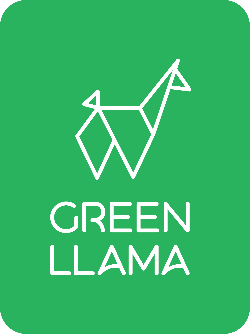Natural Cleaning Myths Busted: 7 "Hacks" That Don't Work (And What to Do Instead)
by Kay Baker on Nov 19, 2025
Green Cleaning Guides
Natural Cleaning Myths Busted: 7 "Hacks" That Don't Work (And What to Do Instead)
Transparency note: This article cites government sites, standards bodies, and peer-reviewed sources wherever possible. Educational only, not medical or legal advice.
A quick scroll through Pinterest or your favorite eco-friendly blog, and you’re bound to see it: a simple, three-ingredient recipe for homemade laundry detergent. It usually involves a grated bar of soap, some washing soda, and maybe a little borax.
The appeal is undeniable. It feels frugal, wholesome, and free of mysterious chemicals. You get to control exactly what’s going into your washing machine. What could be better?
We love that spirit. It’s the same drive for transparency and simplicity that fuels us at Green Llama. But as scientists and formulators, we have to be honest about something crucial: most DIY laundry recipes aren't actually making detergent.
They’re making soap. And while that sounds like a minor detail, it’s the key to why your homemade efforts might be leaving your clothes dingy, stiff, and coated in a funky residue.
The Big Problem: Soap vs. Detergent
Here’s a little kitchen-sink chemistry lesson that will change how you see laundry forever.
-
Soap is made from fats or oils combined with an alkali (like lye). It works great for washing your hands.
-
Detergent is a synthetic blend of chemicals called "surfactants" that are specifically engineered to work in a washing machine.
The critical difference? How they react with water. Most of us have "hard water," which is full of minerals like calcium and magnesium.
When soap molecules meet hard water minerals, they bind together and form a new, waxy, insoluble substance. You know it by its common name: soap scum.
Instead of lifting dirt and washing it away, homemade laundry soap often creates this residue, which then builds up on your clothes and inside your washing machine.
The Unseen Damage of DIY Laundry Soap
You might not notice the buildup at first, but over time, that soap scum can cause a host of problems:
-
Dingy, Grayish Fabrics: The waxy residue traps dirt and grime in the fibers of your clothes, making your whites look dull and your colors appear faded.
-
Stiff, Scratchy Towels: That buildup makes fabrics feel rough and less absorbent. Your once-fluffy towels can become stiff as a board.
-
Funky Odors: Soap scum is a food source for bacteria. It can trap body oils and sweat, leading to a persistent mildew-like smell, even in "clean" clothes.
-
Washing Machine Buildup: That same residue can coat the inside of your washer drum and pipes, reducing its efficiency and lifespan.
In short, your effort to get cleaner clothes could actually be making them dirtier over time.
A Note on Borax and Washing Soda
Let’s talk about the other two common ingredients. Washing soda is great; it's a mineral-based water softener (sodium carbonate) that helps detergents work better. We’re big fans.
Borax, on the other hand, is more complicated. While it's a naturally occurring mineral, it’s not without concerns. The Environmental Working Group (EWG) gives it a poor rating due to its potential to be a skin irritant and disrupt hormones. For a brand obsessed with safety, it's not an ingredient we would ever use.
The Modern Detergent Solution: Smarter, Not Harsher
So, if DIY soap is out, what's the answer? It’s not going back to the giant plastic jug. It’s choosing a professionally formulated, science-backed detergent that delivers a true clean.
Modern eco-detergents are designed to solve the exact problems that DIY recipes create:
-
They use surfactants, not soap, to lift and remove dirt effectively in all water temperatures.
-
They contain chelating agents (like sodium gluconate), which grab onto hard water minerals and prevent them from interfering with the cleaning process. No soap scum!
-
They use enzymes to target and break down specific stains like grass, blood, and oil.
You’re getting all the benefits you sought from DIY, no harsh chemicals, no synthetic fragrances, no plastic waste, but with the scientific precision needed for a genuine, deep clean. It's the best of both worlds.
Your desire for a simple, honest, and effective laundry solution is exactly right. You just need the right tool for the job. Instead of kitchen-sink chemistry, you deserve the peace of mind that comes from proven laboratory science. This is a core principle of our entire sustainable laundry routine.
Ready to trade the risks of DIY for a guaranteed clean?
Discover Our Science-Backed Laundry Powder




